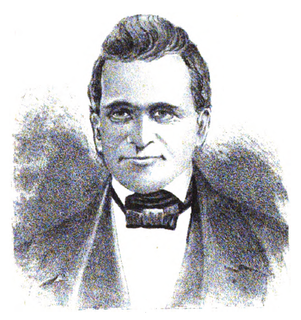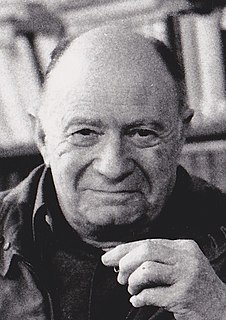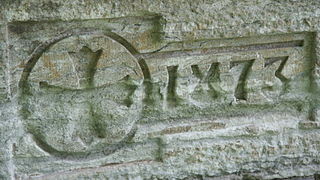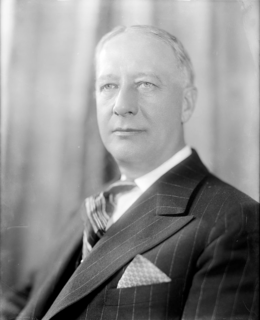
Seabury Ford was a Whig politician from Ohio. He served as the 20th Governor of Ohio and was the last Whig to serve as governor.

Jacques Ellul was a French philosopher, sociologist, lay theologian, and professor who was a noted Christian anarchist. Ellul was a longtime Professor of History and the Sociology of Institutions on the Faculty of Law and Economic Sciences at the University of Bordeaux. A prolific writer, he authored 58 books and more than a thousand articles over his lifetime, many of which discussed propaganda, the impact of technology on society, and the interaction between religion and politics. The dominant theme of his work proved to be the threat to human freedom and religion created by modern technology. Among his most influential books are The Technological Society and Propaganda: The Formation of Men's Attitudes.

The Episcopal Diocese of Massachusetts is one of the nine original dioceses of the Episcopal Church in the United States of America.

Samuel Seabury was the first American Episcopal bishop, the second Presiding Bishop of the Episcopal Church in the United States of America, and the first Bishop of Connecticut. He was a leading Loyalist in New York City during the American Revolution and a known rival of Alexander Hamilton.

William Sidney Mount was an American painter best known for his genre paintings, although he also painted landscapes and portraits. He was a contemporary of the Hudson River School.
Johann Baptist Metz is a German Catholic theologian. He is Ordinary Professor of Fundamental Theology, Emeritus, at Westphalian Wilhelms University in Münster, Germany.

Bexley Hall was an Episcopal seminary from 1824 until April 27, 2013 when it federated with Seabury-Western Theological Seminary as Bexley Hall Seabury-Western Theological Seminary Federation, also known as Bexley Seabury. For three years, Bexley Seabury seminary operated from two locations—in Bexley, Ohio, a suburb of Columbus, and in Chicago, Illinois. —until July 2016 when it consolidated at a single campus location at Chicago Theological Seminary in Chicago's Hyde Park/Woodlawn district. Bexley Seabury is one of 10 official seminaries of the Episcopal Church in the United States of America. Bexley Seabury's mission includes, "creating new networks of Christian formation, entrepreneurial leadership and bold inquiry in the service of the Gospel".

Robert Wood Johnson I was an American industrialist. He was also one of the three brothers who founded Johnson & Johnson.
The Hofstadter Committee, also known as the Seabury investigations, was a joint legislative committee formed by the New York State Legislature on behalf of Governor Franklin D. Roosevelt to probe into corruption in New York City, especially the magistrate's courts and police department in 1931. It led to major changes in the method of arrest, bail and litigation of suspects in New York City. It also coincided with the decline in Tammany Hall's political influence in New York State politics.

Seabury-Western Theological Seminary (SWTS) was a seminary of the Episcopal Church, located in Evanston, Illinois. It ceased operations as a residential seminary granting the Master of Divinity degree in May 2010, and in January 2012 it moved from Evanston to the Evangelical Lutheran Church in America headquarters near O'Hare Airport. In 2013, it federated with Bexley Hall seminary to form the Bexley Hall Seabury Western Theological Seminary Federation, the federation then moved to the second floor of Chicago Theological Seminary in July 2016 to continue to offer its academic degrees including its Master of Divinity degree. The Federation is commonly known as Bexley Seabury.

The Merchant's House Museum, known formerly as the Old Merchant's House and as the Seabury Tredwell House, is the only nineteenth-century family home in New York City preserved intact — both inside and out. Built "on speculation" in 1832 by Joseph Brewster, a hatter by trade, it is located at 29 East Fourth Street, between Lafayette Street and the Bowery in Manhattan. It became a museum in 1936, founded by George Chapman, a cousin of the family who once lived there.
George John Seabury was a chemist and pharmacist.

Samuel Seabury was an American lawyer and politician from New York. Seabury is famous for dedicating himself to a campaign against the corrupt Tammany dominance of New York City politics. He later presided over the extensive 1930–32 investigations of corruption in the New York City municipal government, which became known as the 'Seabury Hearings'. Seabury became a Georgist after reading Progress and Poverty.

The 1918 New York gubernatorial election took place on November, 1918, to elect the Governor and Lieutenant Governor of New York, concurrently with elections to the United States Senate in other states and elections to the United States House of Representatives and various state and local elections.
Samuel Seabury (1729–1796) was the first American Episcopal bishop and the Episcopal Church's second presiding bishop.
A Full Vindication of the Measures of Congress was one of Alexander Hamilton's first published works, published in December 1774, while Hamilton was a 19-year-old student at King's College in New York City.
Seabury Cone Mastick was an American lawyer and politician from New York.

Gas Engine & Power Company & Charles L. Seabury Company was a ship building firm located in Morris Heights, New York. It was formed from the merger of the Charles L. Seabury Company founded in 1885 in Nyack, New York and the Gas Engine & Power Company founded about the same time in Morris Heights, New York. Seabury was famous for its steam yachts and Gas Engine & Power Company primary focus was in naptha-powered launches. Although initially, the company went by the name of Gas Engine & Power Company & Charles L. Seabury Company, after the First World War, it became known as Consolidated Shipbuilding. The shipyard was located on Mathewson Road in the Morris Heights neighborhood of the Bronx, near what is today the location of Roberto Clemente State Park. Consolidated Shipbuilding moved to Robert Jacobs shipyard on City Island after the Second World War and it continued to build ships until 1958.














